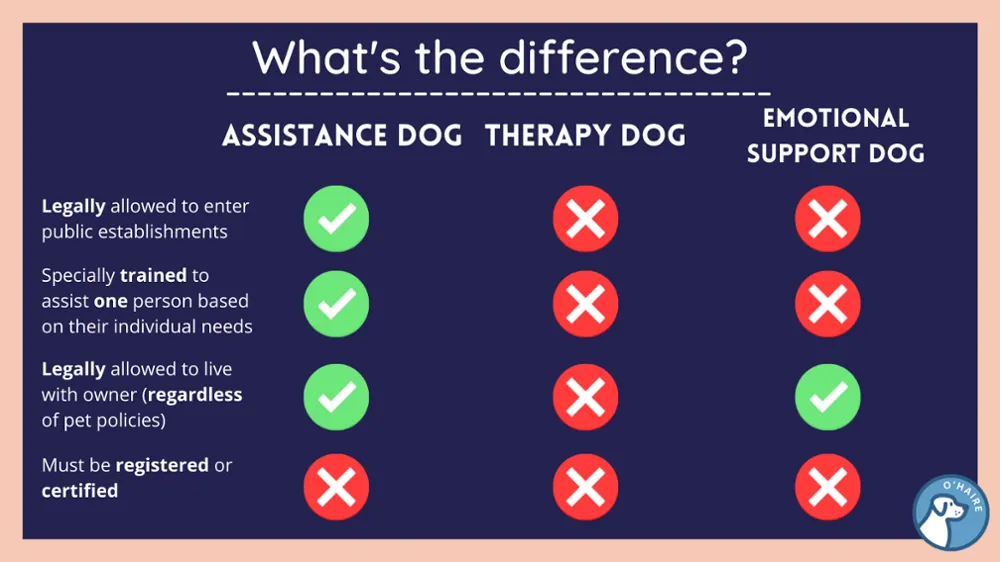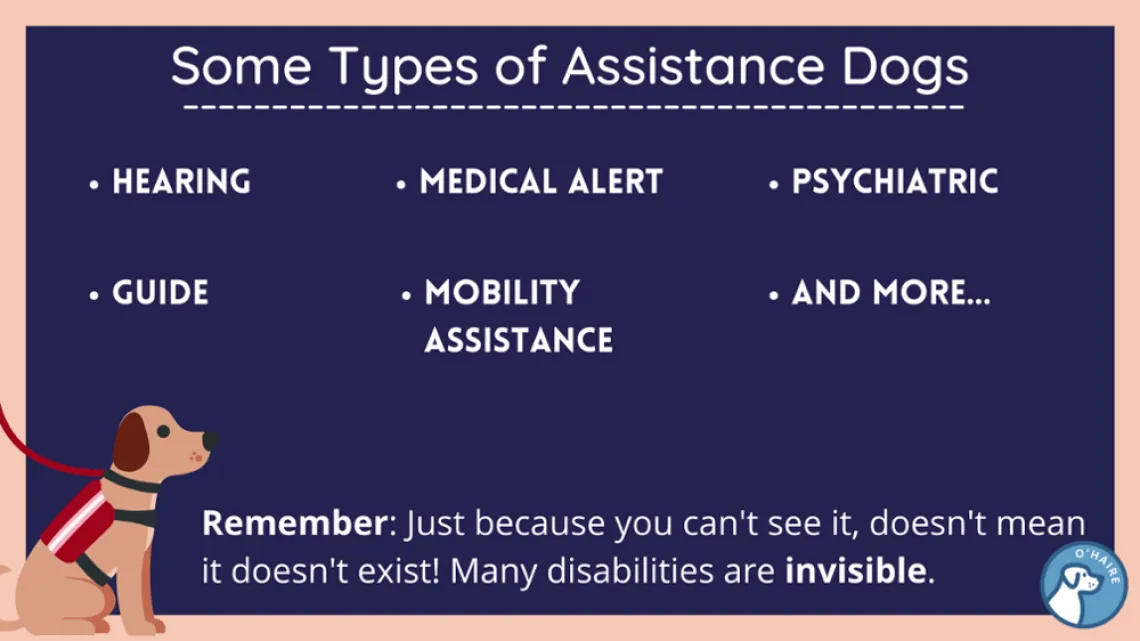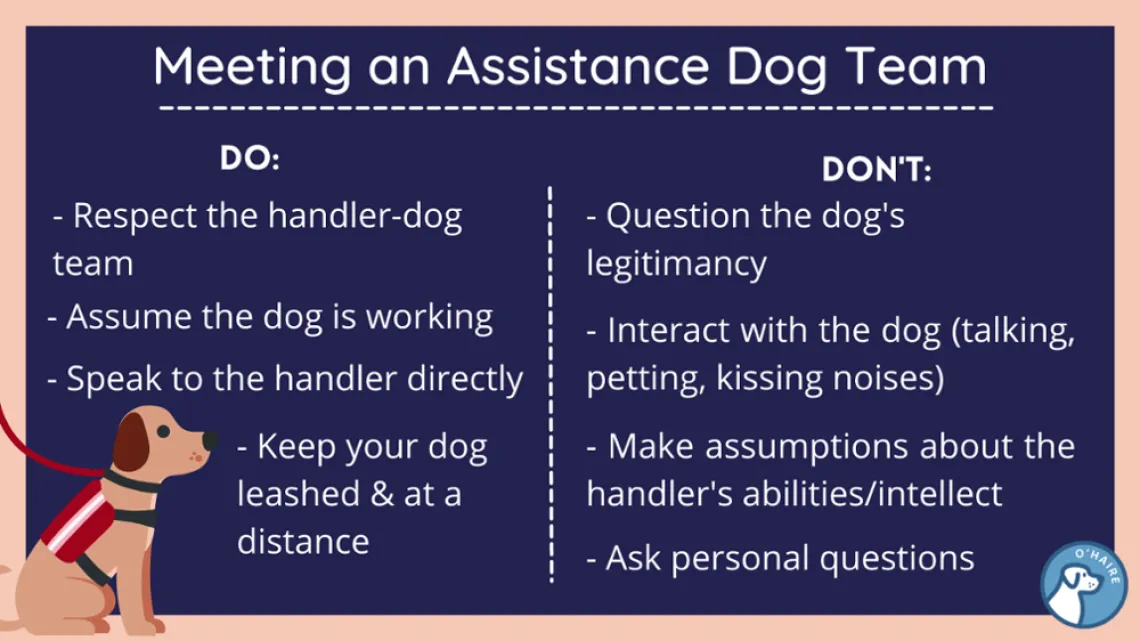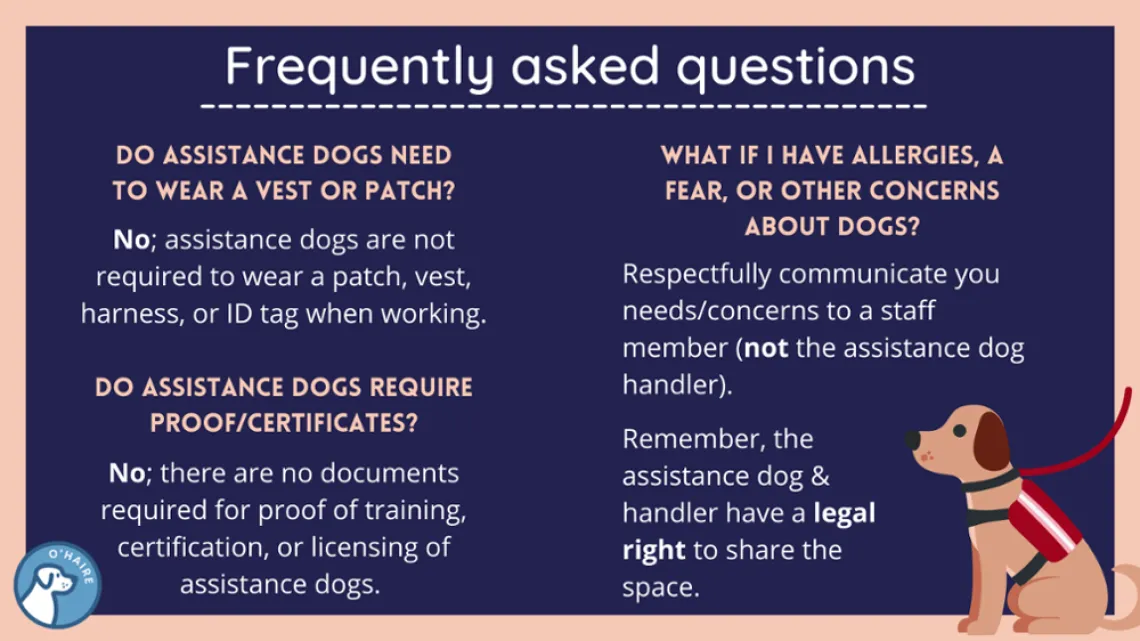Mobility and Medical Alert Dogs
Learn how to identify an assistance dog team and the steps to appropriately and politely interact.
What is an assistance dog?
Assistance dogs are trained in specific tasks to assist an individual with a disability [1]. They come in all shapes and sizes: a guide dog helping someone blind or visually impaired, a service dog assisting someone with a physical or psychiatric disability, a hearing dog assisting someone d/Deaf or hard of hearing, a medical alert dog helping someone with a medical condition, and more [2,3].
Our Research
The OHAIRE Group collaborates with a service and facility dog provider, Canine Assistants, to evaluate the effects of human-animal interaction in a research program funded by Elanco. This partnership allows for multiple studies investigating the impact of the human-animal bond on service dog recipients. The initial research is one of the first large-scale studies to collect scientific evidence of the emotional and psychosocial effects of canine assistance and companionship for service dog recipients. A concurrent study investigates the impact of living with a service dog on the family members of the service dog recipient. In addition to the emotional and psychosocial outcomes, this study also measured the effect of a service dog on caregiving outcomes.
Inclusion Matters
Assistance dogs can be a social bridge for people with disabilities [4], yet over 75% of handlers have experienced discrimination because of their use of an assistance dog [5]. Educating yourself and your children creates a culture of inclusion [3,5,6] and minimize stress for all parties.
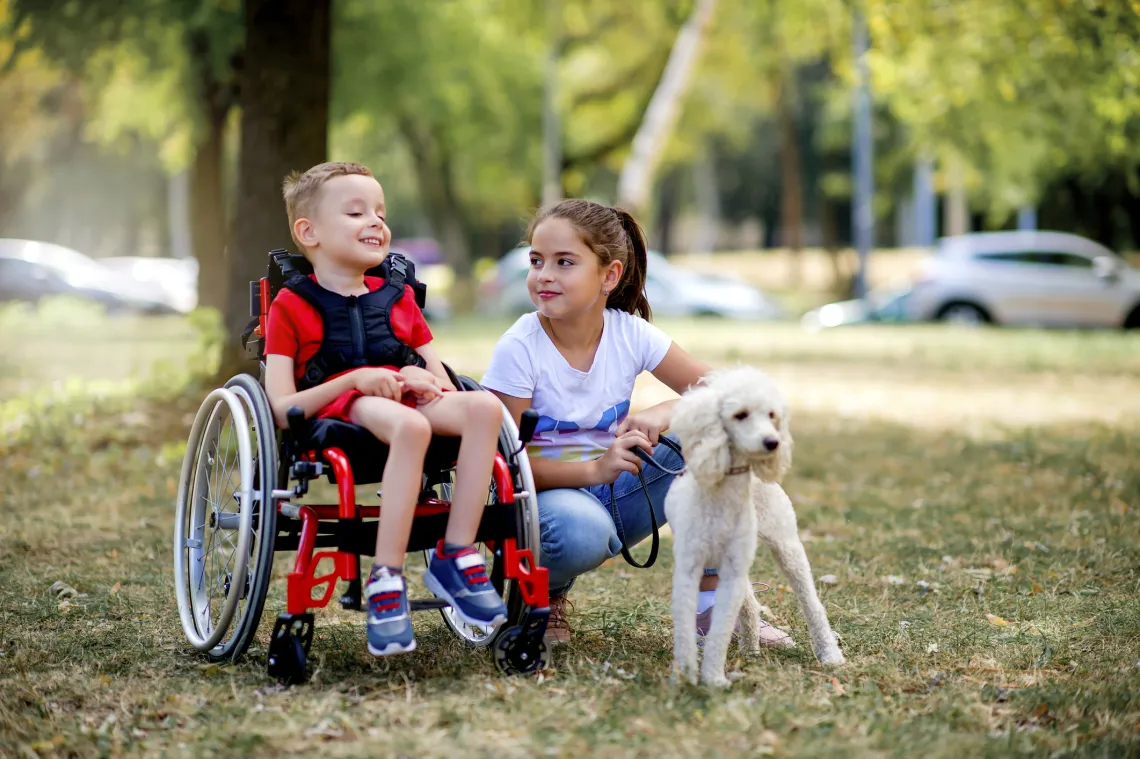
Allergies, Fears, Cultural, and Religious Concerns
You may have important reasons you cannot or would prefer not to interact with a dog. If so, communicate your needs respectfully and discretely to a staff member so you can be accommodated [2]. Remember that as long as the dog behaves appropriately, the team has a legal right to share the public space. It is up to the business to accommodate everybody comfortably and equitably [1,2].
The Dangers of Distraction
Assistance dog handlers rely on their dogs for their safety, well-being, and independence. Even though they are well-trained, assistance dogs can lose focus if distracted, creating a health and safety concern for the handler [7]. In some states, interfering with their work is even considered a criminal offense [8].
Do’s and Don’ts
Assistance dog etiquette is also disability etiquette. How do you respectfully and appropriately approach a team and keep human and canine needs in mind? [3,5,6,7]
The Handler
- Speak directly to them (rather than an attendant, interpreter, or family member).
- Don't make assumptions about their abilities or intellect.
- Know that some disabilities are invisible.
- Avoid personal questions.
- Put the person first (they are a person with a disability, not a disabled person).
The Dog
- Speak to the person, not the dog.
- Think of the dog as a piece of medical equipment, equivalent to a wheelchair or hearing aid.
- Assume they are working.
- Avoid distracting the dog with sound, touch or eye contact.
- Do not offer food or treats.
- Ask first if it's okay to pet them. It may or may not be!
- Keep your dog under control and at a distance.
Assistance Dog Fraud
What can you do if a dog enters your business or facility as an assistance dog?
Why is assistance dog fraud a problem?
- Many handlers-dog teams have faced discrimination from business owners and customers due to prior negative encounters with fake assistance dogs [5].
- Pets misbehaving or aggressive can interfere with a legitimate assistance dog's work, putting the handler at risk.
Is the assistance dog legitimate?
- You will recognize a genuine handler-assistance dog team when you see them; the dog will be quiet, confident, and well-behaved [9].
- If the team is not causing any disruption, do not interfere. It is not necessary, nor is it recommended, to question every person entering with a dog.
- Smile and treat them with the utmost respect. They may be expecting skepticism or coming directly from an experience of public discrimination.
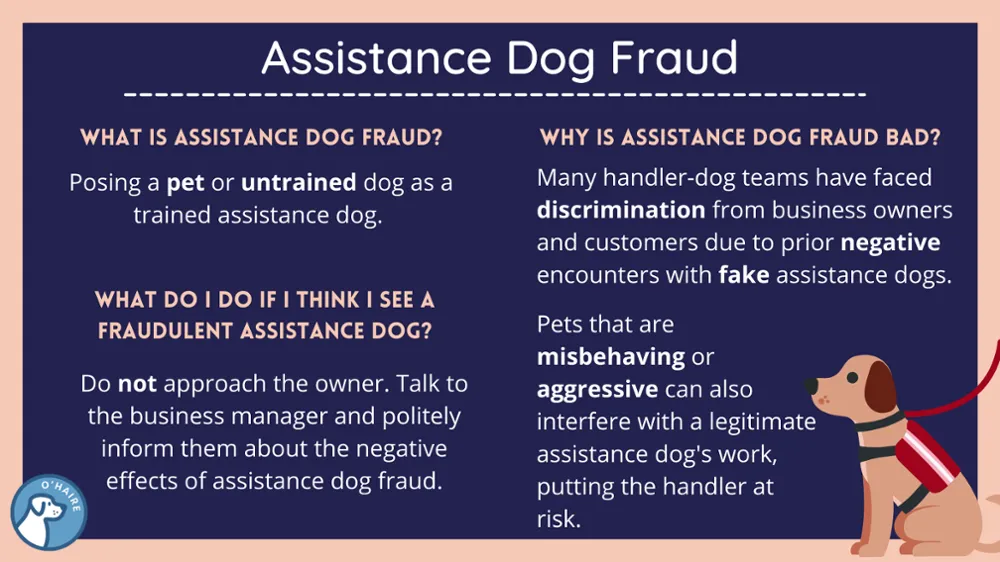
For Business Owners and Employees
Not sure if the assistance dog is legitimate?
- Ask the two questions that businesses can legally ask to determine the legitimacy of a service animal [1]:
- "Is the dog a service animal required because of a disability?"
- "What work or task has the dog been trained to perform?"
- If the handler can answer these questions, thank them for their time. You can let them know you are trying to make it a more accessible space for teams like them by trying to identify fake or unqualified assistance animals.
- If the handler cannot answer these questions or their responses indicate that the animal is not needed for a disability, offer resources (such as this page) to clarify the definitions and access laws for assistance dogs compared to companion or support animals.
- U.S. Department of Justice. (2010, September 15). Americans with Disabilities Act 2010 Revised Requirements: Service Animals.
- Levey, J. A. & Cappy, S. L. (2017). Service Dogs in the Perioperative setting. AORN Journal, 105(4), 365-369.
- Davidson, J. J., Cummin, T. M., & Strandova, I. (2020). Supporting Service Dogs in the Classroom. Intervention in School and Clinic, 55(5), 313-318.
- Bould, E., Bigby, C., Bennett, P. C., & Howell, T. J. (2018). 'More people talk to you when you have a dog' - Dogs as catalysts for social inclusion of people with intellectual disabilities. Journal of Intellectual Disability Research, 62(10), 833-841.
- Mills, M. L. (2017). Invisible disabilities, visible Service Dogs: The discrimination of Service Dog handlers. Disability & Society, 32(5), 635-656.
- Murphy, K. L. (2007). Addressing Changing Times Teaching Disability Etiquette to PETE Students. Journal of Physical Education, Recreation, & Dance, 78(7), 41-44.
- Parette, H. P. & Hourcade, J. J. (1995). Disability Etiquette and School Counselors: A Common Sense Approach Toward Compliance With the Americans With Disabilities Act. The School Counselor, 42(3), 224-232.
- Wisch, R. F. (2021). Table of State Assistance Animal Laws. Michigan State University College of Law, Animal Legal & Historical Center.
- Campbell, K. (2016). Supporting the adoption of legislation criminalizing 'fake' service and emotional support animals. Journal of Animal & Environmental Law, 8. U.S. Department of Justice. (2015, July). Frequently Asked Questions about Service Animals and the ADA.

